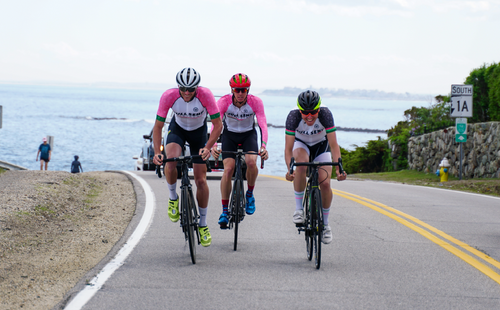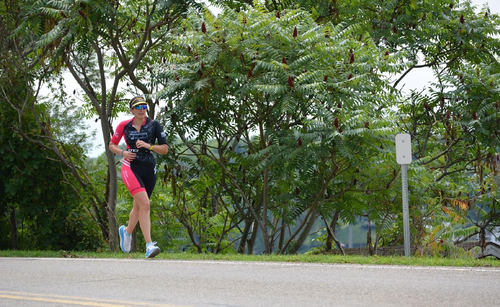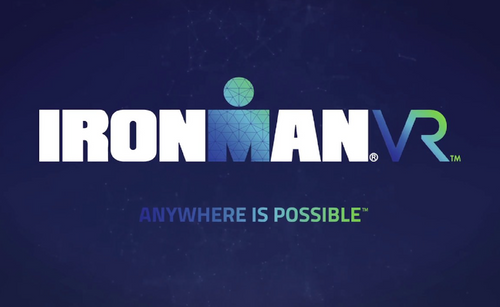Untapped - Functional Movement to Unlock Your Potential

Everybody has a story
Hard work, performance, and striving to become a better version of oneself is inherent in every athlete - particularly true in endurance athletes. As a coach and bike fitter, I work with athletes daily, and have the opportunity to help them find some newfound potential in their sport. Finding new potential in how your body performs does not have to be the new and sexy trend, or what your friend or teammate is doing in their training. Some areas of strength can be applied across the board, but the conditioning specificity and appropriateness varies tremendously based on your body’s needs, habitual movement patterns, and how well or poorly different areas of your body move. We all have one vessel that is built to carry us around this world, and they all have an individual story. Part of applying yourself to training is also honoring the body’s stories that make you move in the way it does, feel the way it does, and look the way it does. We will never be perfect, but we can commit to working towards improving how we move and feel with purpose and direction.
Where to Start
Just because we can get through an extremely challenging event without an issue does not mean that we can’t improve on how we perform the movements that got you across the finish line. Triathlon requires thousands upon thousands of repetitive, sagittal plane movements. In order to create an environment for our bodies to become resilient to injury from overuse or poor form/technique, we must change the way our bodies stabilize, resist gravity, and displace force. To help us understand what’s causing an athlete pain, discomfort, or poor performance, we perform a functional movement screening. At the beginning of a bike fit, a movement screening is used to help highlight areas of tension, weakness, strength, compensation and overuse. Limitations can also shed light on queues that coaches can use in their programming, both in their sport-specific movements as well as their auxiliary work.
Hips, Glutes, and Core
There are several consistencies observed in triathletes when it comes to weakness, poor muscle recruitment, and subsequent lost power and stability when the body fatigues. The three most commonly discussed areas also happen to be chief complaints, or are an underlying reason for pain/discomfort while training. These areas are the hips, glutes, and lower back. Lifestyle is the greatest culprit for this confluence of issues or weaknesses, but the effects are perpetuated by the frequent and lengthy use of our quadriceps, lower abdominals, hip flexors and psoas muscle. Poor maintenance of these areas combined with lack of activation or recruitment from the posterior chain and lateral stabilizer muscles can expedite the negative effects of poor alignment and muscle compensation. Here are three of my go-to routines for athletes seeking improvements in their low back stability, anterior hip capsule, and to better recruit their glutes for activity.

A Few Peak State Fit Favorites
#1 Foundation Training by Dr. Eric Goodman
This twelve minute video is one of the hardest things you’ll do all week, but its WORTH IT. I’ve had athletes find relief from years of low back issues, hip imbalances, and even upper body pain by following Dr. Goodman’s practice of Foundation Training. Everything in his program is worthwhile to check out, and has practices specific to runners, cyclists, and swimmers!
The Pilates Hip Series is a fan favorite and has become a staple in every Peak State Fit athlete’s routine during the week. This will certainly remind you of Jane Fonda, but we can guarantee that your hip strength will yield benefits in all three sports.
This is an OLD video with our previous coaching company name, but this routine is one that Peak State Fit athletes commonly do prior to cycling or running. You might already do this kind of work in your conditioning - if so, keep it up! If not, begin performing this 2-3 times per week, and try adding it into your pre-ride and run routine and see if you can feel a difference in how you run or ride out the door!

Train Hard, Condition (and Recover) Harder
Again, your routine you do should be appropriate to YOU and what your body is doing/experiencing. Working hard should have an equal amount of attention to CONDITIONING. It doesn’t have to take hours, but it should be appropriate and purpose-driven. Honor your body and instead of having to hire a physical therapist or doctor to help alleviate pain, be proactive and hire a coach or trainer who can help you move better and feel better both in and out of training. They can help align your strength and conditioning with your goals of staying injury-free, and increase your body’s potential for success at the same time! This approach to training will not only translate to your sports, but will improve your body’s health and resiliency for the rest of your life.
Written by
Pat Casey

Everybody has a story
Hard work, performance, and striving to become a better version of oneself is inherent in every athlete - particularly true in endurance athletes. As a coach and bike fitter, I work with athletes daily, and have the opportunity to help them find some newfound potential in their sport. Finding new potential in how your body performs does not have to be the new and sexy trend, or what your friend or teammate is doing in their training. Some areas of strength can be applied across the board, but the conditioning specificity and appropriateness varies tremendously based on your body’s needs, habitual movement patterns, and how well or poorly different areas of your body move. We all have one vessel that is built to carry us around this world, and they all have an individual story. Part of applying yourself to training is also honoring the body’s stories that make you move in the way it does, feel the way it does, and look the way it does. We will never be perfect, but we can commit to working towards improving how we move and feel with purpose and direction.
Where to Start
Just because we can get through an extremely challenging event without an issue does not mean that we can’t improve on how we perform the movements that got you across the finish line. Triathlon requires thousands upon thousands of repetitive, sagittal plane movements. In order to create an environment for our bodies to become resilient to injury from overuse or poor form/technique, we must change the way our bodies stabilize, resist gravity, and displace force. To help us understand what’s causing an athlete pain, discomfort, or poor performance, we perform a functional movement screening. At the beginning of a bike fit, a movement screening is used to help highlight areas of tension, weakness, strength, compensation and overuse. Limitations can also shed light on queues that coaches can use in their programming, both in their sport-specific movements as well as their auxiliary work.
Hips, Glutes, and Core
There are several consistencies observed in triathletes when it comes to weakness, poor muscle recruitment, and subsequent lost power and stability when the body fatigues. The three most commonly discussed areas also happen to be chief complaints, or are an underlying reason for pain/discomfort while training. These areas are the hips, glutes, and lower back. Lifestyle is the greatest culprit for this confluence of issues or weaknesses, but the effects are perpetuated by the frequent and lengthy use of our quadriceps, lower abdominals, hip flexors and psoas muscle. Poor maintenance of these areas combined with lack of activation or recruitment from the posterior chain and lateral stabilizer muscles can expedite the negative effects of poor alignment and muscle compensation. Here are three of my go-to routines for athletes seeking improvements in their low back stability, anterior hip capsule, and to better recruit their glutes for activity.

A Few Peak State Fit Favorites
#1 Foundation Training by Dr. Eric Goodman
This twelve minute video is one of the hardest things you’ll do all week, but its WORTH IT. I’ve had athletes find relief from years of low back issues, hip imbalances, and even upper body pain by following Dr. Goodman’s practice of Foundation Training. Everything in his program is worthwhile to check out, and has practices specific to runners, cyclists, and swimmers!
The Pilates Hip Series is a fan favorite and has become a staple in every Peak State Fit athlete’s routine during the week. This will certainly remind you of Jane Fonda, but we can guarantee that your hip strength will yield benefits in all three sports.
This is an OLD video with our previous coaching company name, but this routine is one that Peak State Fit athletes commonly do prior to cycling or running. You might already do this kind of work in your conditioning - if so, keep it up! If not, begin performing this 2-3 times per week, and try adding it into your pre-ride and run routine and see if you can feel a difference in how you run or ride out the door!

Train Hard, Condition (and Recover) Harder
Again, your routine you do should be appropriate to YOU and what your body is doing/experiencing. Working hard should have an equal amount of attention to CONDITIONING. It doesn’t have to take hours, but it should be appropriate and purpose-driven. Honor your body and instead of having to hire a physical therapist or doctor to help alleviate pain, be proactive and hire a coach or trainer who can help you move better and feel better both in and out of training. They can help align your strength and conditioning with your goals of staying injury-free, and increase your body’s potential for success at the same time! This approach to training will not only translate to your sports, but will improve your body’s health and resiliency for the rest of your life.
Written by
Pat Casey
SEE WHAT CUSTOM APPAREL LOOKS LIKE

GEAR UP
MORE FROM THE BLOG

This is our reason to exist, our purpose
If the year 2020 teaches us anything, it is that our world needs us to do better. We need to...

Our journey towards becoming Climate Neutral
About us Innerforce was born with one vision: to connect with passionate people who genuinely believe in sports’ power to...

Virtual Racing
The last few months have been challenging for many of us in a variety of ways. I had no idea...

Protein Recommendations in Endurance Sports
Nutrition, in my opinion, is the most important part of any endurance sport. Without proper fueling and hydration, training adaptations...



